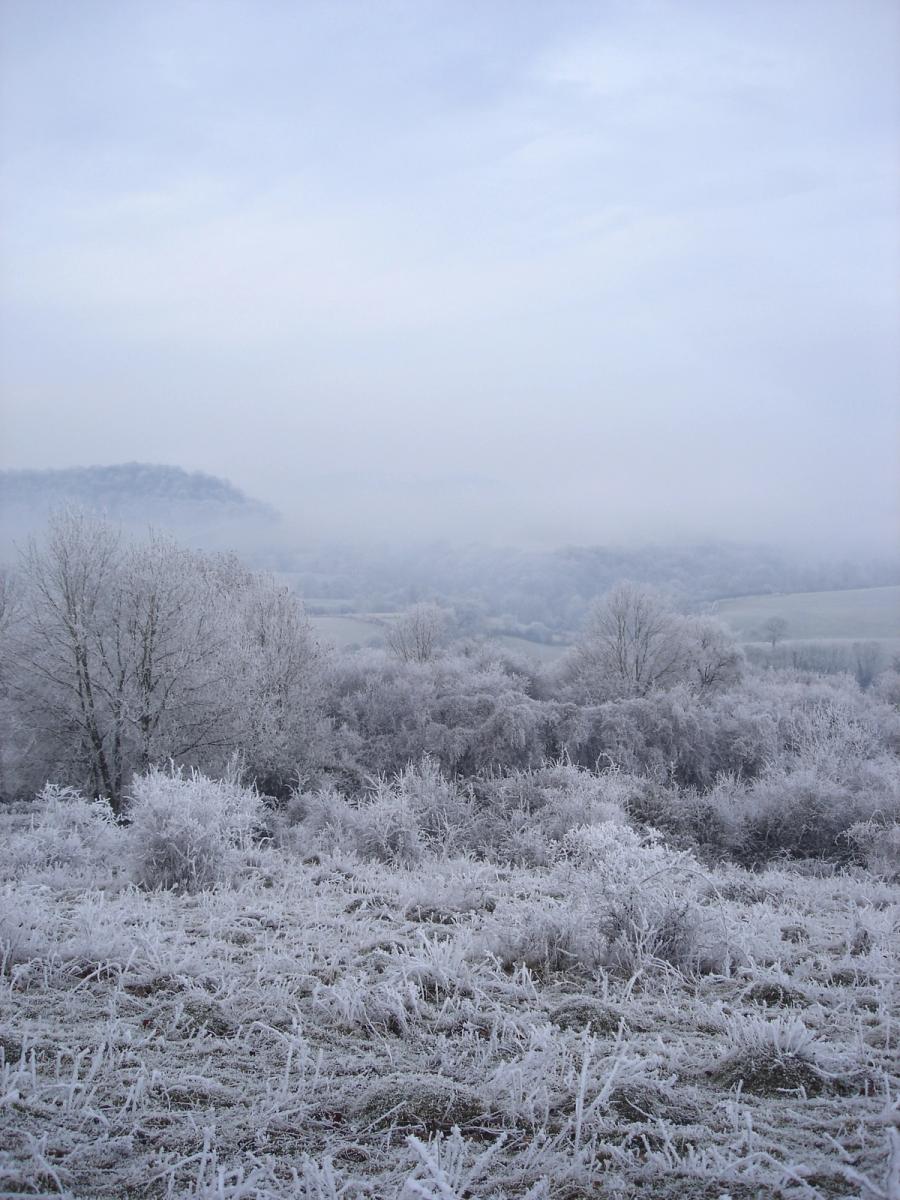The Combe can also be performed on its own.
A Tale
There once the walls
Of the ruined cottage stood.
The periwinkle crawls
With flowers in its hair into the wood.
In flowerless hours
Never will the bank fail,
With everlasting flowers
On fragments of blue plates, to tell the tale.
In Memoriam (Easter, 1915)
The flowers left thick at nightfall in the wood
This Eastertide call into mind the men,
Now far from home, who, with their sweethearts, should
Have gathered them and will do never again.
The Combe
The Combe was ever dark, ancient and dark.
Its mouth is stopped with bramble, thorn, and briar;
And no one scrambles over the sliding chalk
By beech and yew and perishing juniper
Down the half precipices of its sides, with roots
And rabbit holes for steps. The sun of Winter,
The moon of Summer, and all the singing birds
Except the missel-thrush that loves juniper,
Are quite shut out. But far more ancient and dark
The Combe looks since they killed the badger there,
Dug him out and gave him to the hounds,
That most ancient Briton of English beasts.
Programme Note
I grew up close to Edward Thomas’s home in East Hampshire, and that landscape has filtered into this song cycle. The wooded hangers above Steep are a very distinctive landscape of predominantly beech slopes with dark yew valleys. One of these mysterious and ancient yew woods sits below the house Thomas lived in from 1909 until 1913, and may be the very combe which the third poem refers to.
The narrative of A Tale is represented with a bright neoclassical inspired sound. The pitch content is focused on cyclic patterns, contrasted with sliding material. Although the most playful of the poems, there is a sinister edge and a central theme of human decay. All three poems include imagery of nature outlasting human creations and lives.
Where A Tale allows itself to explore the solo countertenor’s voice with expressive melisma and deconstruction of words, In Memoriam and The Combe focus on conveying the serious and heavy content of their texts. The countertenor is primarily syllabic while the ensemble illustrates and elaborates on the heavy emotional content of the poems.
The structures of In Memoriam and The Combe are fairly free, with only limited repetitions of material. They are closely defined by the poems they set, each dividing into two halves, with substantial central instrumental sections and slowly building introductions.
In Memoriam is a particularly poignant poem as Edward Thomas would be killed only two years later, at the Battle of Arras: one of the very “men now far from home” which his poem speaks of. My setting is a stark and austere memorial.
The Combe is the darkest of the three poems. This setting uses the unsettling sound of the low ensemble and countertenor voice to reflect the uneasy tone of the poem. The reprised “juniper” motif ties the two halves of the poem together. They are almost all now gone from the hangers.
Photo © Liz Clifford 2021
